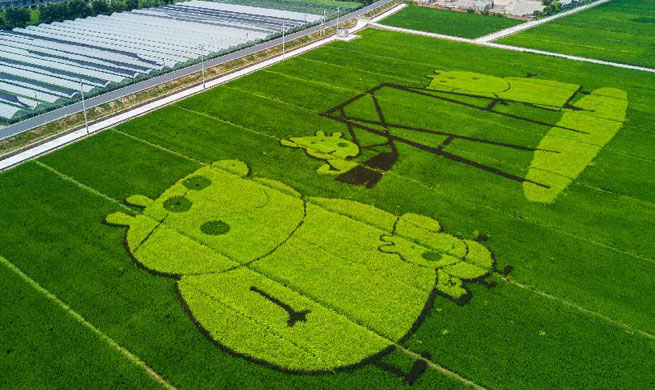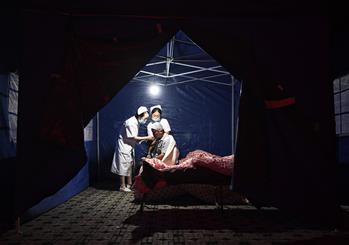WASHINGTON, Aug. 17 (Xinhua) -- Chinese scientists said Thursday they may have revealed how the sensation of an itch turns into the action of a scratch, laying a solid ground for the development of potential therapies for chronic itch.
In a study published in the U.S. journal Science, the researchers reported the discovery of a central neural circuit that moves itch signal from the spinal cord to a part of the brainstem called the parabrachial nucleus (PBN).
"Our study revealed a long-range neural circuit that is critical for transmitting itch signal from the spinal cord to brain," Sun Yan-Gang of the Chinese Academy of Sciences' Institute of Neuroscience, who led the study, told Xinhua.
"This study paves a way for further dissection of central circuit mechanisms underlying itch signal processing, and provides a potential target for therapeutic treatment of chronic itch," Sun said.
Although itch sensation is an important protective mechanism for animals, chronic itch, often seen in patients with skin and liver diseases, "remains a challenging clinical problem" as the uncontrollable scratching behavior causes severe skin and tissue damage, said Sun.
However, slow progress has been made in the development of therapeutic approaches for chronic itch treatment due to the lack of knowledge about itch mechanisms.
In the new study, Sun's team first investigated how the spinal itch-specific neurons send itch signal to the brain.
Past studies have shown that spinal neurons expressing gastrin-releasing peptide receptor (GRPR) are required for itch sensation.
Sun's team found the spinal GRPR neurons did not send the itch information directly to the brain. Instead, these neurons accomplish this task via activating another type of neurons that project to the PBM in the brain.
By manipulating the spino-parabrachial pathway with optogenetics, the team showed that inhibition of this circuit suppressed itch-induced scratching behavior in mice.
The study also confirmed the functional role of PBN in itch processing, showing that the activity of PBN neurons was elevated during this process.
"These findings suggest that the PBN represents a first critical central relay for itch sensation, and its activity regulates both acute and chronic itch-induced scratching," Sun added.
This work, entitled "A Central Neural Circuit for Itch Sensation" was carried out mainly by Sun's lab, with help from Professor Li Hui of the Fourth Military Medical University in China.
The study was supported by the Strategic Priority Research Program of the Chinese Academy of Sciences and the National Natural Science Foundation of China.

















